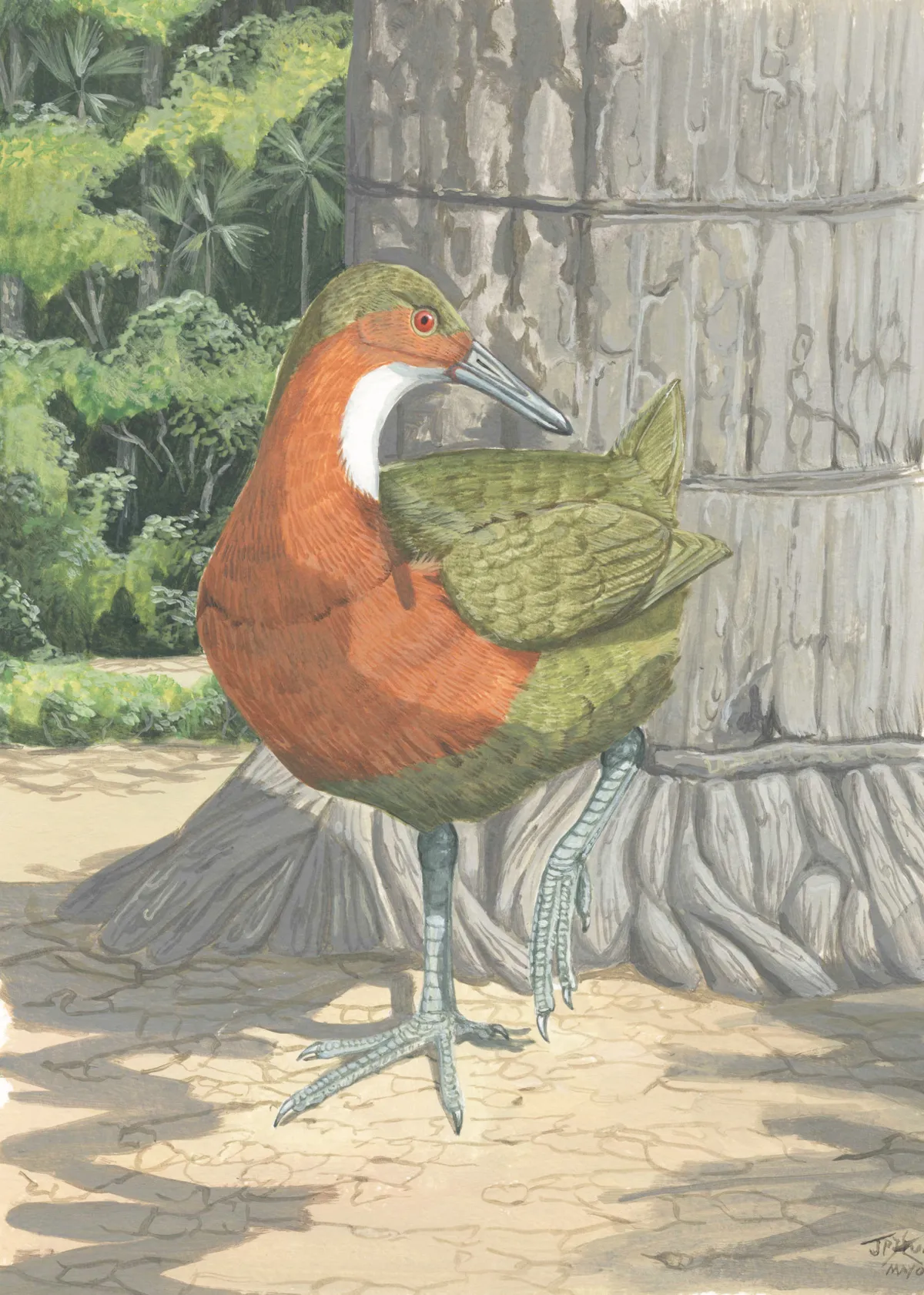The new research, led by Natural History Museum paleontologist Dr Julian Hume, explores the surprisingly complex history of the Aldabra rail, a descendant of the flying white-throated rail.
The study, published in the Zoological Journal of the Linnean Society, reveals fossil evidence of the flightless rail on the island of Aldabra, dating back 136,000 years.
Sediments on Aldabra show that the island has been completely submerged by the ocean on multiple occasions since then, eradicating all life on its shores.
But in the years following the 136,000-year-old rail fossils, the white-throated rail returned to the island and became flightless again about 118,000 years ago.

“Aldabra went under the sea and everything was gone, and there was an almost complete turn over in the fauna,” explains Hume.
“Everything, including an endemic crocodile and duck, as well as the tortoise and the rail, went extinct. Yet as the Aldabra rail still lives on today, something must have happened for it to have returned.”
Julian found a leg bone in a fossil dating back to immediately after the last inundation event, about 118,000 years ago, which showed the species was more robust and heavier than the flying white-throated rail, and was losing its ability to fly once again.
“There is no other case that I can find of this happening,” Hume continues, “where you have a record of the same species of bird becoming flightless twice. It wasn't as if it were two different species colonising and becoming flightless. This was the very same ancestral bird.”
The research suggests that once the sea levels dropped again, and the island of Aldabra reappeared, the white-throated rail once again recolonised the islands and became flightless, giving rise to the modern Aldabra rail birds we see today.
Read the paper in the Zoological Journal of the Linnean Society.